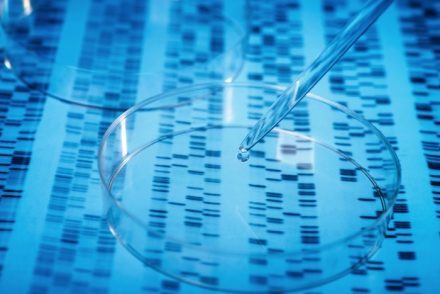Smart Key: Physical traceability, integrity at the core of the fiber The
Previously we explored how digital traceability and blockchain solutions can help accelerate the mapping of value chains. These extraordinary data-carrying/sharing tools are most effective when the data is irrefutable. And the further back we retrace the production process, the greater the risk of inaccuracy or falsification.
So, is it truly possible to authenticate a raw material with certainty?
A system under strain
The math is both simple and shocking: the amount of organic cotton sold is more than the amount produced.
Following years of suspected false certificates, an investigation by the Global Organic Textile Standard in India in 2020 uncovered 20,000 tons of cotton that did not meet organic criteria. Due to constantly rising demand, limited supplies and unreliable paper certificates, flaws in the system led to a proliferation of fraud. Certificates bearing QR codes linked to a fake official website claimed to be authentic. Though in this example the material happened to be organic cotton, a similar situation has been found in recycled materials, which, though certified, are not always completely free of the risk of falsification.


Read also: Smart Key: How do digital tools accelerate traceability?
While certificate-based verifications can take steps to improve their transactional and on-site control methods, is there a way to add a security step that entails the physical authentication of the material?
Rigorous traceability
Today, this information can be found at the heart of a material. For the past several years a growing number of methods have been introduced to attest to a material’s origins, or specific quality, not by monitoring its identity documents but rather by examining the constitution of the material itself.
There are 2 main categories in this kind of verification: scientific analysis and additive markers.
SMART KEY 1 –Forensic analysis: the power of scientific testing
Forensic tracers mainly focus on verifying the geographic origin of plant and animal fibers.
In order to diagnose materials, an analysis of the biochemical properties of a fiber or material is performed, looking at the isotopic ratios (specifying elements with identical chemical properties) and characteristics of the geographical areas, or by referring to their DNA structures.

Data bases are created of standard samples drawn from the various supply zones, to identify all their characteristics, and thereby consolidate each genetic fingerprint. Materials submitted for verification are then analyzed to check for attributes shared with these standard strains.
One of the leading players in the development of these new technologies is Oritain, which can now certify the premium qualities of Supima cotton and provides additional security for its data via Textile Genesis’ digital blockchain traceability system.
This is a true game changer in terms of verifying origin and ensuring that the material in question is not sourced from a high-risk area. These methods could be important drivers for providing proof of origin, particularly in response to regulations such as the Uyghur Forced Labor Protection Act.
SMART KEY 2 – Applied markers – for encapsulated traceability
Three different methods stand out. Synthetic DNA markers that provide molecular identification. Luminescent inks or rare earths, recognizable via UV or infrared reading devices.
And, more specialized, watermarked optical impressions, invisible to the naked eye, which are only applied to rolls of fabric.

Synthetic or luminescent DNA substances can be incorporated when the fiber undergoes its first transformation, such as ginning for cotton, or at the first phase of plastic recycling, when the polymers are ground, for example, to authenticate the materials at a very early stage. These are applied as sprays or dissolved in processing solutions and can also be integrated later in the processing operations, depending on the desired objective.
Haelixa’s synthetic DNA markers are contained in a micro-matrix and can be sprayed onto fibers and semi-finished materials. They can then be verified by quick and easy DNA tests. Beyond textiles, Haelixa also authenticates fine stones and gold.
The various kinds of tracers are made to withstand a material’s multiple stages of transformation and are certified harmless.
Luminous nanoparticles inspired by FiberTrace banknotes can be read via a spectrometer scanner to identify the content level in the material. This technology already makes it possible to trace recycled cotton and synthetics, and now aims to expand to the leather market.
The French leather industry has moved into the issue of traceability, and has been successfully developing physical marking for several years. CTC’s Alis laser technology gives a unique identifier to skins, which withstands wet work, tanning and finishing.
The information consolidated at the farm and slaughterhouse level is indexed via a code affixed to the skin with a high-powered CO2 laser. This technique is coupled with Artificial Intelligence to allow an automated reading of this number, to reduce the time needed for identification.
Consumer demand for transparency, along with the sustainable aims of brands and growing regulatory pressure, suggests that these solutions will be increasingly implemented in our value chains in order to meet these expectations as effectively as possible. Still at the POC stage a few years ago, they are now scaling up to major programs.
So what’s the drawback, what’s the risk of these solutions? Cost, as always. As commendable as they are, who will foot the bill for these verification tools? The suppliers? The brand? The consumer? At the heart of this issue is the question of value and the price paid for a service that guarantees the absolute integrity of the final product.
Sources
Fashion for good & Textile Exchange – The textile tracer assessment (July 2022)
